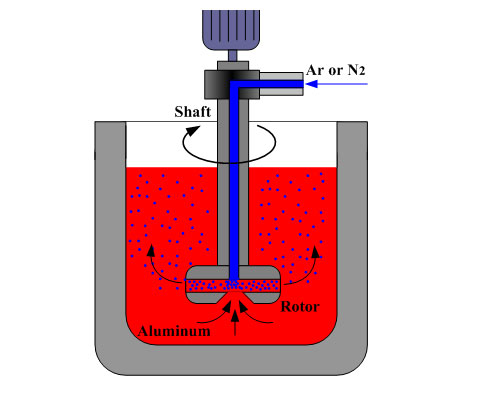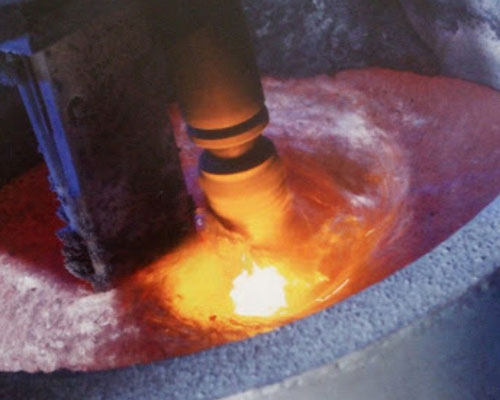Porosity in aluminum alloy often occurs in the upper part of the casting and often occurs on the surface of the protruding part of the casting. The hidden pores inside the casting can be seen through X-rays. The degassing process in aluminum casting can solve the porosity.
Causes of Porosity in aluminum Alloy
- The pouring speed is too fast, which is involved in the air;
- Poor exhaust gas from the mold;
- Liquid aluminum flows too fast;
- The melting temperature is too high;
- Poor alloy degassing;
- Pouring temperature is too high;
- Sand core is not dry, poor exhaust or too much gas.

Degassing Process in Aluminum Casting
- Pouring the molten metal smoothly;
- Add exhaust slots or exhaust plugs to areas where metal-type gases are not easy to remove, and clean them frequently;
- When pouring, the ladle should be as close as possible to the gate cup;
- Strictly control the temperature of aluminum liquid to prevent over-temperature;
- Liquid aluminum is degassed correctly, AdTech online degassing unit and refining flux is helpful for liquid aluminum degassing;
- The mud core should be dried, the vent hole should be unblocked, the mud core should be re-baked after regaining moisture, and the middle of the large mud core should be hollowed out;
- After the metal type coating, the coating should be dried before pouring.
The greater the amount of degassing required, the longer the time required for degassing. The degassing efficiency and degassing time are related to the rotor speed and the volume of the injected gas, and the latter two are controlled by the degassing equipment. The speed of the rotor should be set at a higher level so that the ejected bubbles can spread throughout the entire In the melt. If the rotor speed is too slow, the bubbles will stay near the rotating rod and cannot spread. If the rotor speed is too fast, it may aggravate tumbling, and the latter will cause hydrogen and inclusions to re-enter the molten aluminum. A baffle must be used to prevent the metal solution from forming vortex and excessive tumbling. The volume of the injected gas must also be set so that the appropriate gas enters the molten metal. During the degassing process, slight bubbles should be raised on the surface of the melt. If there are large bubbles on the liquid surface, it indicates that the volume of the injected gas is too high. Excessive amount of gas will cause the sprayed gas to pass through the rotating rotor and float to the liquid level in the form of large bubbles. This situation has no effect on degassing. Excessive amount of gas will only cause waste of inert gas.

